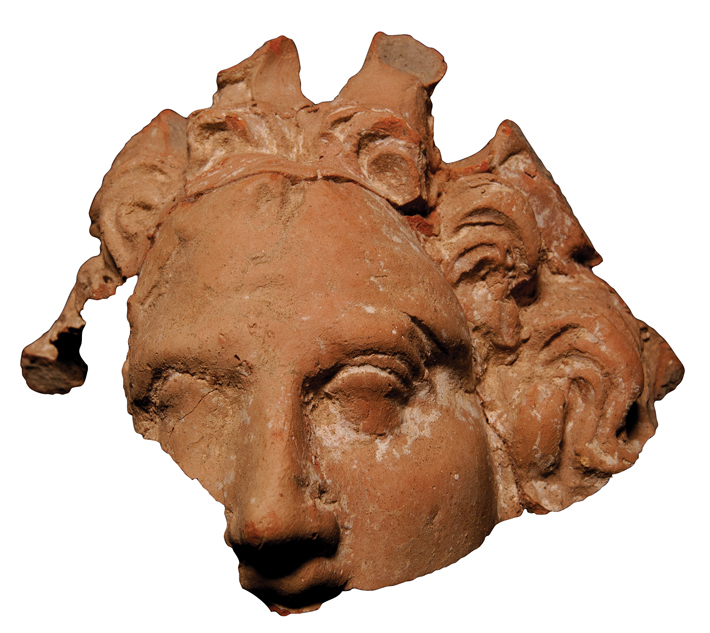Features
Sicily's Lost Theater
By MARCO MEROLA
Monday, March 18, 2019
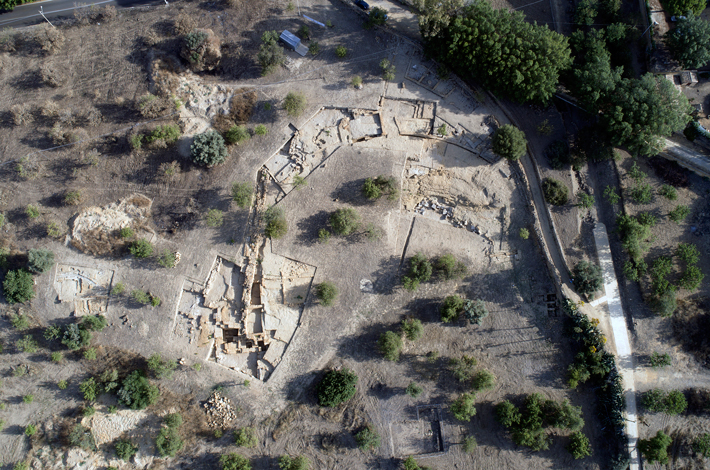
Going to the theater was an essential part of ancient Greek civic and religious life. Plays such as the tragedies of Aeschylus and Euripides, the comedies of Aristophanes and Menander, and likely numerous other works that have not survived, were regularly staged at religious festivals. Masked actors and a chorus whose role was to comment on the play’s action in song, dance, and verse entertained festivalgoers and paid honor to the gods. “Since the very beginning of Greek civilization, a theater was always a religious building housed in a sanctuary,” says archaeologist Luigi Maria Caliò of the University of Catania. “In the Greek world, everything was related to holiness, and theaters were built in sacred areas.”
At first, theaters were likely just open areas or hillsides with no cavea, or tiered seating area. From about the sixth to the fourth centuries B.C., says Caliò, Greek theaters were built of wood. Sophocles’ Oedipus at Colonus and Electra, for example, were performed in wooden theaters. Beginning in the fourth century B.C., theaters were often built in stone. “When theaters were monumentalized, they became a crucial part of cities around the Greek world,” Caliò says. Though nearly all traces of the wooden structures have been lost, remains of ancient Greek stone theaters—almost 150 have been discovered to date—still stand from Italy to the Black Sea, at sites such as Epidaurus in the Greek Peloponnese, the sanctuary of Apollo at Delphi, and Taormina in Sicily. As one of the most important cities in the ancient Mediterranean during the classical era and home to one of its grandest sanctuaries, Akragas (now Agrigento), on Sicily’s southern coast, must have had a theater as well. But no ancient sources mention one there and, until recently, no archaeological evidence of such a structure had ever been found.
The city-state of Akragas was founded in 582 B.C. by Greeks from Gela, a flourishing Sicilian colony some 40 miles away that had been established a century earlier. Akragas reached its zenith under the tyrant Theron, who ruled from about 489 to 472 B.C. In 480 B.C., Theron and his ally and brother-in-law Gelon, ruler of the powerful colony of Syracuse, were part of a coalition that defeated the Carthaginians at the Battle of Himera, ending, temporarily at least, the Carthaginians’ threat to take over Sicily. To celebrate their victories, Akragas’ rulers launched a series of monumental building projects, including construction of the immense temple dedicated to Olympian Zeus, which, at 340 by 160 feet, was the largest Doric temple in the Greek world. Akragas was razed by the Carthaginians in 406 B.C. and then left largely abandoned until 338 B.C., when the Carthaginians were defeated and the city was rebuilt.
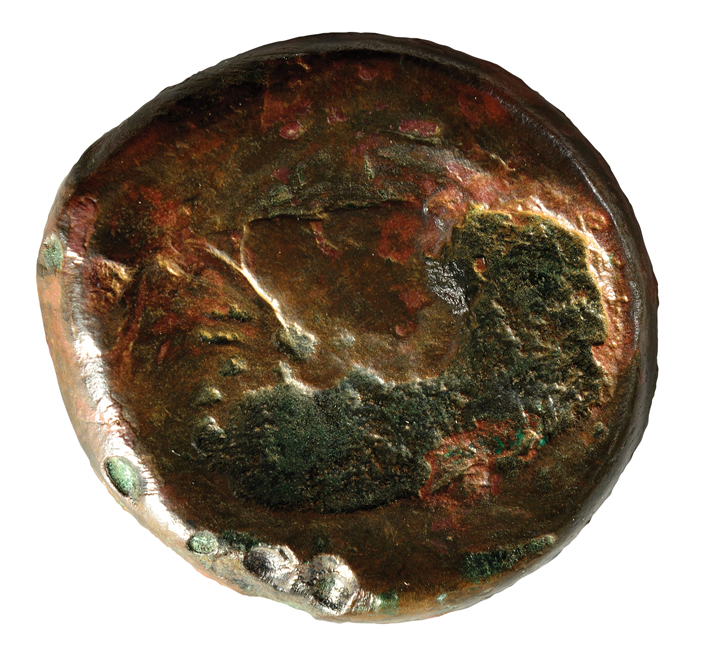 A century later, Akragas was the site of the first pitched land battle of the Punic War, which pitted the resurgent Carthaginians against the newly expanding power of Rome. The Roman victory in 262 B.C. signified the beginning of Roman influence in Sicily. Later, Akragas became Roman Agrigentum. Throughout its history, when the city thrived, building projects and religion did, too. Temples were regularly constructed and dedicated to gods and demigods including Hercules, Zeus, Hera, Athena, Concordia, Hephaestus, Castor and Pollux, Demeter and Persephone, and Isis.
A century later, Akragas was the site of the first pitched land battle of the Punic War, which pitted the resurgent Carthaginians against the newly expanding power of Rome. The Roman victory in 262 B.C. signified the beginning of Roman influence in Sicily. Later, Akragas became Roman Agrigentum. Throughout its history, when the city thrived, building projects and religion did, too. Temples were regularly constructed and dedicated to gods and demigods including Hercules, Zeus, Hera, Athena, Concordia, Hephaestus, Castor and Pollux, Demeter and Persephone, and Isis.
The search for Akragas’ theater began almost a century ago when archaeologist Pirro Marconi directed a large archaeological campaign funded by his English patron, Alexander Hardcastle. Hardcastle was a captain in the British Navy who became fascinated with the site while living in a home known as the Villa Aurea, located between two of Agrigento’s still-standing temples. Until the Englishman died in 1933, he sponsored Marconi’s work. The only written source available to guide Marconi in his search for the theater was De Rebus Siculis Decades Duae, the first printed book on the history of Sicily, written in the middle of the sixteenth century by Dominican monk Tommaso Fazello. Fazello had located what was left of the theater “not very far from San Nicolò church,” adding, “I barely recognize its foundations.” Marconi, however, failed to uncover significant evidence of the structure, ending the pursuit of Akragas’ theater for the next eight decades.
|
Slideshow:
|
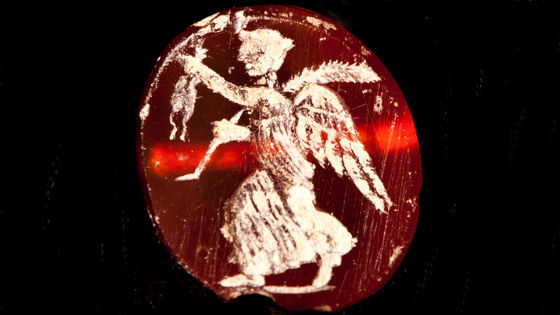
Beyond the Temples
|
Egypt's Eternal City
By ANDREW CURRY
Friday, February 08, 2019
 As geographical guides, creation myths can be unhelpfully vague. Christians, Jews, and Muslims have long searched in vain for the location of the Garden of Eden. For the ancient Egyptians, things were a bit easier. The world, they believed, began on a low hill just outside modern-day Cairo. There the sun rose for the first time and made order out of a roiling sea of elemental chaos. There the Egyptian creator, Atum, and sun god, Ra, first appeared, and there they held court for millennia. And there the Egyptians built their most enduring sacred site, a city known today by its Greek name, Heliopolis, or City of the Sun. At the center of the city, contemporaneous sources and recent archaeological excavations show, was the Temple of the Sun.
As geographical guides, creation myths can be unhelpfully vague. Christians, Jews, and Muslims have long searched in vain for the location of the Garden of Eden. For the ancient Egyptians, things were a bit easier. The world, they believed, began on a low hill just outside modern-day Cairo. There the sun rose for the first time and made order out of a roiling sea of elemental chaos. There the Egyptian creator, Atum, and sun god, Ra, first appeared, and there they held court for millennia. And there the Egyptians built their most enduring sacred site, a city known today by its Greek name, Heliopolis, or City of the Sun. At the center of the city, contemporaneous sources and recent archaeological excavations show, was the Temple of the Sun.
Egyptians worshipped at Heliopolis over the course of countless lifetimes and thousands of years. The earliest known temples there date back nearly 4,600 years, to the first days of Egypt’s pyramids. Inscriptions reveal that generations of pharaohs bolstered their claim to have descended from Atum and Ra by building grand shrines there. At its peak around 1200 B.C., the holy site was marked with dozens of colossal obelisks.
Heliopolis was known far and wide in antiquity. Called On in Hebrew, the city is mentioned multiple times in the Old Testament. It also served as a reference point for other Egyptian sacred sites. Although Thebes, Egypt’s capital during the Middle and New Kingdoms (ca. 2030–1070 B.C.), is now far better known, ancient Egyptian sources referred to it as the “Heliopolis of the South,” and its temples were modeled on those at Heliopolis. Even in its final centuries, Heliopolis was a popular destination supposedly visited by the Greek philosopher Plato, according to an account written four centuries later by the geographer and historian Strabo. Strabo also includes a first-person account of his own visit to the site’s nearly deserted ruins in his book Geographica.
Both physically and theologically, Heliopolis was at the heart of Egyptian religion. It was both city and temple, every corner of it holy, but also filled with everyday activity. “You can compare it to the very center of Vatican City,” says archaeologist and University of Leipzig Egyptian Museum curator Dietrich Raue. “Everyone inside the city was somehow connected to the sun cult or temple.”
Yet today, Heliopolis is virtually unknown. After almost two and a half millennia of continuous worship there, the importance of its temples declined. By the second century B.C., the city was abandoned, for reasons archaeologists are still trying to discern. It was subsequently plundered and stripped of anything that could be burned or reused. Beginning in the late Roman period, nearly all of its limestone architecture was carted away to build Cairo, leaving little to see above the surface. Over time, most of the city’s obelisks were removed, carried off first to decorate Alexandria, and then to Rome, Paris, London, and even New York (see “The Obelisks of Heliopolis,” page 30). Only one still stands at the center of the site, a 68-foot-tall red granite monument erected by Senwosret I around 1950 B.C. that juts out of the ground in the impoverished Cairo neighborhood of Matariya like a hieroglyph-inscribed spike. By the 1800s, Heliopolis had all but vanished under the silt that builds up during the Nile’s annual floods. It was buried under farm fields on the outskirts of Cairo. What was left of Heliopolis is now covered by between six and 20 feet of soil and debris. “It’s extraordinary that one of the most famous cities of the ancient world is now a ghost of a name,” says Stephen Quirke, head of the Petrie Museum at the University of London. “It’s a black hole in our knowledge of ancient Egypt. Heliopolis is the great site.”
|
Slideshow:
|
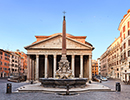
The Obelisks of Heliopolis
|
Advertisement
Also in this Issue:
Advertisement
IN THIS ISSUE
From the Trenches
Fairfield's Rebirth in 3-D
Off the Grid
Reburial in Luxor
Mild Boars
Foreign Funeral Rites
The Magic Mineral
Die With Your Boots On
After the Rain
Ice Merchants
The Chicken People
Honoring the Ancestors
Ahead of His Time
Celtic Trophy Heads
A Ride to Valhalla
India's Temple Island
World Roundup
English food culture, Japanese weevils, the Sri Lankan spice trade, and surviving the Tibetan Plateau
Artifact
A lady’s circle of influence
Advertisement

Recent Issues
-
 May/June 2024
May/June 2024
-
 March/April 2024
March/April 2024
-
 January/February 2024
January/February 2024
-
 November/December 2023
November/December 2023
-
 September/October 2023
September/October 2023
-
 July/August 2023
July/August 2023
-
 May/June 2023
May/June 2023
-
 March/April 2023
March/April 2023
-
 January/February 2023
January/February 2023
-
 November/December 2022
November/December 2022
-
 September/October 2022
September/October 2022
-
 July/August 2022
July/August 2022
-
 May/June 2022
May/June 2022
-
 March/April 2022
March/April 2022
-
 January/February 2022
January/February 2022
-
 November/December 2021
November/December 2021
-
 September/October 2021
September/October 2021
-
 July/August 2021
July/August 2021
-
 May/June 2021
May/June 2021
-
 March/April 2021
March/April 2021
-
 January/February 2021
January/February 2021
-
 November/December 2020
November/December 2020
-
 September/October 2020
September/October 2020
-
 July/August 2020
July/August 2020
-
 May/June 2020
May/June 2020
-
 March/April 2020
March/April 2020
-
 January/February 2020
January/February 2020
-
 November/December 2019
November/December 2019
-
 September/October 2019
September/October 2019
-
 July/August 2019
July/August 2019
-
 May/June 2019
May/June 2019
-
 March/April 2019
March/April 2019
-
 January/February 2019
January/February 2019
-
 November/December 2018
November/December 2018
-
 September/October 2018
September/October 2018
-
 July/August 2018
July/August 2018
-
 May/June 2018
May/June 2018
-
 March/April 2018
March/April 2018
-
 January/February 2018
January/February 2018
-
 November/December 2017
November/December 2017
-
 September/October 2017
September/October 2017
-
 July/August 2017
July/August 2017
-
 May/June 2017
May/June 2017
-
 March/April 2017
March/April 2017
-
 January/February 2017
January/February 2017
-
 November/December 2016
November/December 2016
-
 September/October 2016
September/October 2016
-
 July/August 2016
July/August 2016
-
 May/June 2016
May/June 2016
-
 March/April 2016
March/April 2016
-
 January/February 2016
January/February 2016
-
 November/December 2015
November/December 2015
-
 September/October 2015
September/October 2015
-
 July/August 2015
July/August 2015
-
 May/June 2015
May/June 2015
-
 March/April 2015
March/April 2015
-
 January/February 2015
January/February 2015
-
 November/December 2014
November/December 2014
-
 September/October 2014
September/October 2014
-
 July/August 2014
July/August 2014
-
 May/June 2014
May/June 2014
-
 March/April 2014
March/April 2014
-
 January/February 2014
January/February 2014
-
 November/December 2013
November/December 2013
-
 September/October 2013
September/October 2013
-
 July/August 2013
July/August 2013
-
 May/June 2013
May/June 2013
-
 March/April 2013
March/April 2013
-
 January/February 2013
January/February 2013
-
 November/December 2012
November/December 2012
-
 September/October 2012
September/October 2012
-
 July/August 2012
July/August 2012
-
 May/June 2012
May/June 2012
-
 March/April 2012
March/April 2012
-
 January/February 2012
January/February 2012
-
 November/December 2011
November/December 2011
-
 September/October 2011
September/October 2011
-
 July/August 2011
July/August 2011
-
 May/June 2011
May/June 2011
-
 March/April 2011
March/April 2011
-
 January/February 2011
January/February 2011
Advertisement





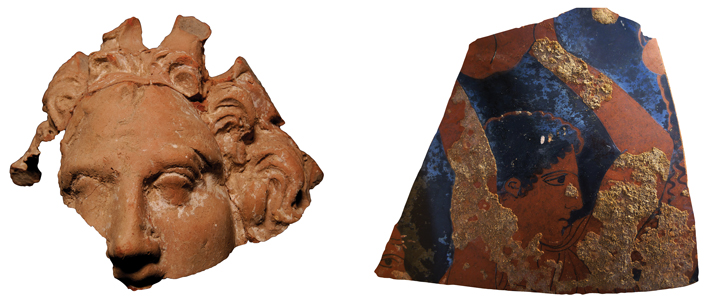
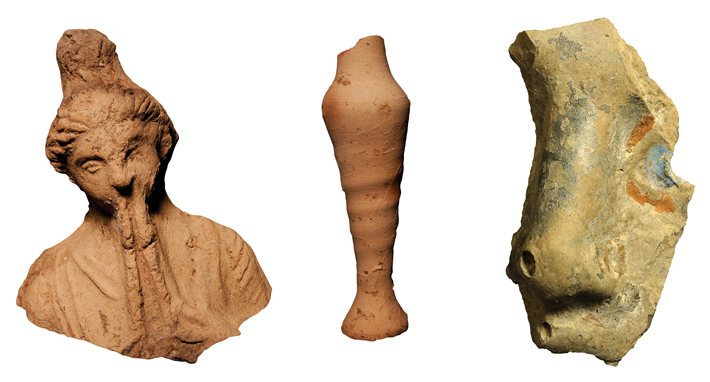
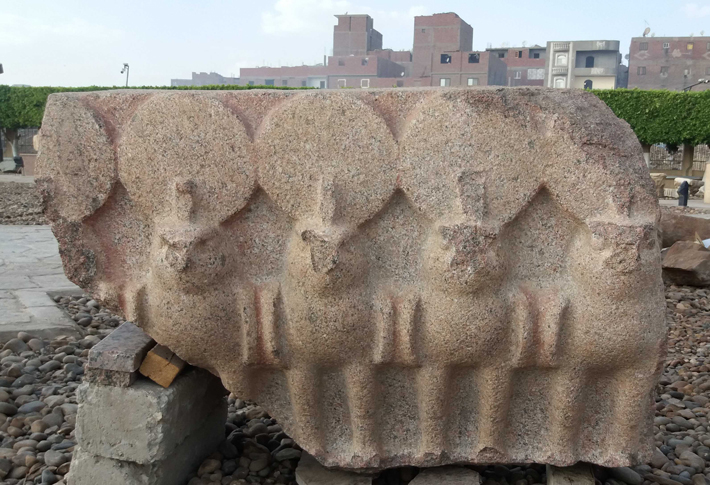 Heliopolis’ fate wasn’t unique. Many ancient Egyptian metropolises, including Thebes and Memphis, were also abandoned and later covered over by modern settlements or fields. There was little interest among early Egyptologists in exploring these urban sites. Quirke traces this to the fact that scholars of the eighteenth, nineteenth, and much of the twentieth centuries were more intent on discovering inscribed temples and tombs than the cities and urban environments that surrounded them. Furthermore, by this time, most of Heliopolis was long gone. “If you’re looking for standing monuments, you don’t come to Heliopolis,” Quirke says.
Heliopolis’ fate wasn’t unique. Many ancient Egyptian metropolises, including Thebes and Memphis, were also abandoned and later covered over by modern settlements or fields. There was little interest among early Egyptologists in exploring these urban sites. Quirke traces this to the fact that scholars of the eighteenth, nineteenth, and much of the twentieth centuries were more intent on discovering inscribed temples and tombs than the cities and urban environments that surrounded them. Furthermore, by this time, most of Heliopolis was long gone. “If you’re looking for standing monuments, you don’t come to Heliopolis,” Quirke says.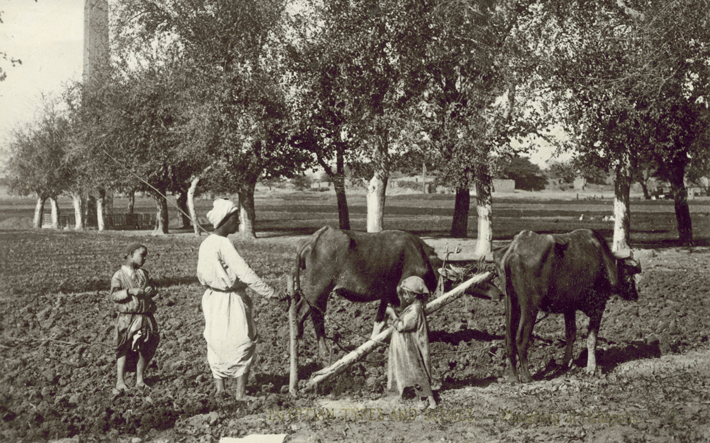 Still, the city was never truly lost. Napoleon’s forces fought at Heliopolis in March of 1800, and contemporary paintings of the battle often include its ruins and lone surviving obelisk. As recently as the early 1900s, the outlines of its walls were visible, and anyone studying ancient Egyptian religion or royalty would have recognized it from ample references in ancient texts. In the later twentieth century, Egyptian authorities protected the site from development. Much of Heliopolis’ central temple precinct was owned by Egypt’s government and was left undisturbed as Cairo grew to the north. The large nearby necropolis—the final resting place of many of the ancient city’s priests, workers, and officials—was protected by heritage laws that required archaeological excavation before any new construction. A nearby suburb was named Heliopolis in the ancient city’s honor, but a small open-air museum and the solitary obelisk were all that remained above ground to mark the location of the sacred site. “The area was completely empty and waiting for archaeologists,” says geophysical archaeologist Tomasz Herbich of the Polish Academy of Sciences. “Unfortunately, archaeology wasn’t interested.” While Egyptian archaeologists from Cairo University and the Supreme Council of Antiquities worked on the site’s edges and conducted salvage excavations in the surrounding neighborhood, foreign archaeologists flocked to more accessible sites elsewhere in Egypt. Until, that is, Dietrich Raue came along.
Still, the city was never truly lost. Napoleon’s forces fought at Heliopolis in March of 1800, and contemporary paintings of the battle often include its ruins and lone surviving obelisk. As recently as the early 1900s, the outlines of its walls were visible, and anyone studying ancient Egyptian religion or royalty would have recognized it from ample references in ancient texts. In the later twentieth century, Egyptian authorities protected the site from development. Much of Heliopolis’ central temple precinct was owned by Egypt’s government and was left undisturbed as Cairo grew to the north. The large nearby necropolis—the final resting place of many of the ancient city’s priests, workers, and officials—was protected by heritage laws that required archaeological excavation before any new construction. A nearby suburb was named Heliopolis in the ancient city’s honor, but a small open-air museum and the solitary obelisk were all that remained above ground to mark the location of the sacred site. “The area was completely empty and waiting for archaeologists,” says geophysical archaeologist Tomasz Herbich of the Polish Academy of Sciences. “Unfortunately, archaeology wasn’t interested.” While Egyptian archaeologists from Cairo University and the Supreme Council of Antiquities worked on the site’s edges and conducted salvage excavations in the surrounding neighborhood, foreign archaeologists flocked to more accessible sites elsewhere in Egypt. Until, that is, Dietrich Raue came along.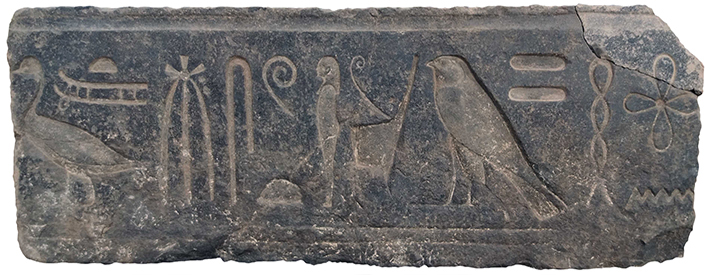 A few years later, the doctoral student was looking for a niche of his own in the crowded field of Egyptology. On his way to work at the pyramids of Dahshur south of Cairo, he thought back to his experience in the library. Arriving in Egypt a few days early, he visited Heliopolis. To his surprise, one of the most important sites in ancient Egypt, with more than two millennia of history, lay virtually unexplored under what amounted to a suburban park. Raue was tantalized. “My Egyptian colleagues always knew about this, but, for me, it was incredible to see that the huge area where the temple stood was not yet completely occupied,” Raue says. “I stood at the obelisk and thought, ‘Maybe something can be done here.’” To Raue’s frustration, local officials told him high costs and a complicated legal situation made digging there prohibitive. While working on a series of other sites in Egypt as part of German and Swiss projects there, Raue went to Heliopolis regularly, staying in touch with local archaeologists and keeping track of construction projects and development plans. “If it was going to be easy,” he says, “it would have been done many years ago.”
A few years later, the doctoral student was looking for a niche of his own in the crowded field of Egyptology. On his way to work at the pyramids of Dahshur south of Cairo, he thought back to his experience in the library. Arriving in Egypt a few days early, he visited Heliopolis. To his surprise, one of the most important sites in ancient Egypt, with more than two millennia of history, lay virtually unexplored under what amounted to a suburban park. Raue was tantalized. “My Egyptian colleagues always knew about this, but, for me, it was incredible to see that the huge area where the temple stood was not yet completely occupied,” Raue says. “I stood at the obelisk and thought, ‘Maybe something can be done here.’” To Raue’s frustration, local officials told him high costs and a complicated legal situation made digging there prohibitive. While working on a series of other sites in Egypt as part of German and Swiss projects there, Raue went to Heliopolis regularly, staying in touch with local archaeologists and keeping track of construction projects and development plans. “If it was going to be easy,” he says, “it would have been done many years ago.”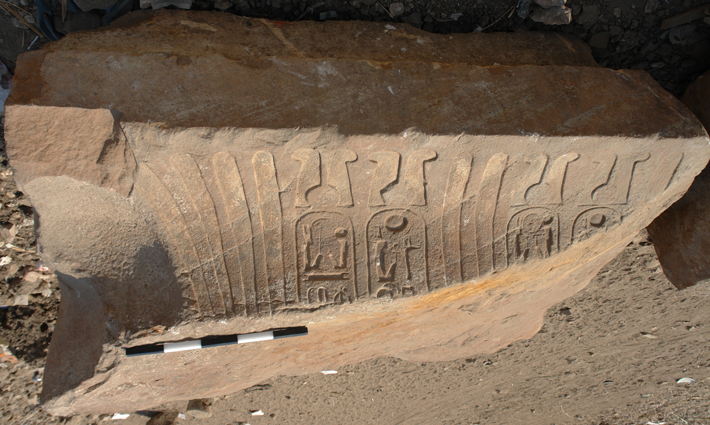 Here and there, small windows of opportunity would open up. In 2005, for example, Raue joined Egyptian colleagues excavating more than three acres of the ancient temple area ahead of planned shopping center construction in the middle of Matariya. Some of the first objects to emerge were fragments of inscribed statues that provided promising physical evidence of the city’s importance. During the excavation, Raue helped document a life-size depiction of the pharaoh Ramesses II (r. ca. 1279–1213 B.C.) dressed in priestly attire that illustrates not only Heliopolis’ religious significance but also its political function as the place where generations of rulers reaffirmed their claim to power over all of Egypt. Hieroglyphs on the statue’s base read “King of Upper and Lower Egypt, lord of the two lands / Son of Ra, lord of crowns / He lets the lord of crowns reunite with the throne of Horus.”
Here and there, small windows of opportunity would open up. In 2005, for example, Raue joined Egyptian colleagues excavating more than three acres of the ancient temple area ahead of planned shopping center construction in the middle of Matariya. Some of the first objects to emerge were fragments of inscribed statues that provided promising physical evidence of the city’s importance. During the excavation, Raue helped document a life-size depiction of the pharaoh Ramesses II (r. ca. 1279–1213 B.C.) dressed in priestly attire that illustrates not only Heliopolis’ religious significance but also its political function as the place where generations of rulers reaffirmed their claim to power over all of Egypt. Hieroglyphs on the statue’s base read “King of Upper and Lower Egypt, lord of the two lands / Son of Ra, lord of crowns / He lets the lord of crowns reunite with the throne of Horus.”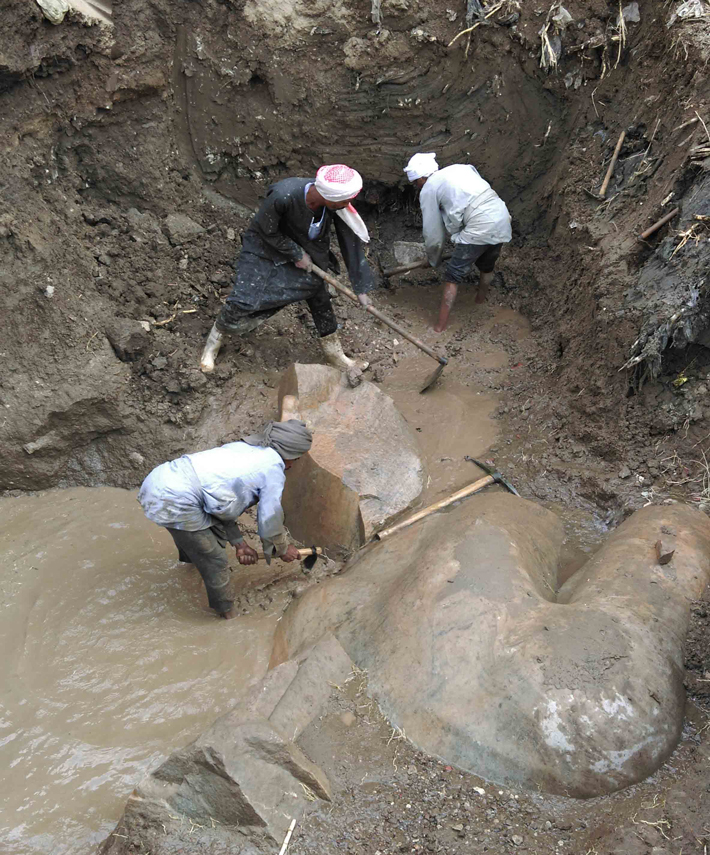 Before they did anything else, the team, together with a force of more than 100 local residents and multiple bulldozers, spent weeks removing the garbage. Underneath the refuse, they confronted six, or sometimes more, feet of modern topsoil. Another six to 10 feet of ancient loam packed almost as hard as concrete lay under that. Beneath it all, they came upon the debris left behind when Heliopolis was dismantled to serve as construction material. “Heliopolis has always been too close to Cairo,” Raue says ruefully. And that’s not all. Even once the layers of garbage and soil were removed, there was a final obstacle—much of Heliopolis’ ancient ruins are actually submerged. “All of our finds are between zero and eight feet under the water table,” Raue says. During the excavations, pumping creates small lakes, which cause huge logistical problems and added pressure for a team already under enormous constraints. For example, it took a tremendous effort to remove an eight-ton fragment of a standing sculpture of pharaoh Psamtik I (r. 664–610 B.C.) from under more than six feet of groundwater.
Before they did anything else, the team, together with a force of more than 100 local residents and multiple bulldozers, spent weeks removing the garbage. Underneath the refuse, they confronted six, or sometimes more, feet of modern topsoil. Another six to 10 feet of ancient loam packed almost as hard as concrete lay under that. Beneath it all, they came upon the debris left behind when Heliopolis was dismantled to serve as construction material. “Heliopolis has always been too close to Cairo,” Raue says ruefully. And that’s not all. Even once the layers of garbage and soil were removed, there was a final obstacle—much of Heliopolis’ ancient ruins are actually submerged. “All of our finds are between zero and eight feet under the water table,” Raue says. During the excavations, pumping creates small lakes, which cause huge logistical problems and added pressure for a team already under enormous constraints. For example, it took a tremendous effort to remove an eight-ton fragment of a standing sculpture of pharaoh Psamtik I (r. 664–610 B.C.) from under more than six feet of groundwater.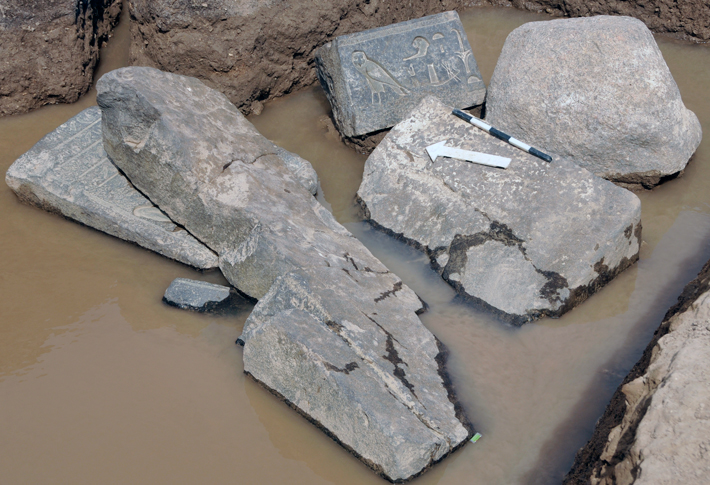 That’s not to say that the team is ignoring the spectacular statuary left behind by generations of pharaohs. When Cairenes looted the site for building materials in the Middle Ages, they took the limestone but left the remains of toppled sculptures of red granite, quartzite, and basalt in place. Among these are intact reliefs 15 feet square and granite falcons that once graced a temple gate dedicated to the pharaoh Nectanebo I (r. 380–362 B.C.). Other finds point to even more impressive monuments—a recently uncovered foot-and-a-half-long stone claw suggests the existence of a sphinx statue 50 feet long. “Whatever sculpture we get is extremely high quality,” Raue says. “Heliopolis was such an important site that we just get the best.”
That’s not to say that the team is ignoring the spectacular statuary left behind by generations of pharaohs. When Cairenes looted the site for building materials in the Middle Ages, they took the limestone but left the remains of toppled sculptures of red granite, quartzite, and basalt in place. Among these are intact reliefs 15 feet square and granite falcons that once graced a temple gate dedicated to the pharaoh Nectanebo I (r. 380–362 B.C.). Other finds point to even more impressive monuments—a recently uncovered foot-and-a-half-long stone claw suggests the existence of a sphinx statue 50 feet long. “Whatever sculpture we get is extremely high quality,” Raue says. “Heliopolis was such an important site that we just get the best.” Ashmawy, Raue, and their team are now juggling small excavations scattered across nearly a square mile of teeming urban neighborhoods. They’re just beginning to get a sense of the city of Heliopolis as a whole. Geomorphological investigations by Ghent University geoarchaeologist Morgan De Dapper reconstructed the height of the primordial hill upon which the first temple was built. Drilling in spots where they could not conduct full excavations, the team mapped archaeological layers more than 20 feet thick. Geophysical techniques are enabling Herbich’s team to look below the ground in places that haven’t yet been built over. Using differences in the electrical resistance of mud and stone, he’s able to trace and measure the temple’s foundations and walls, even under many feet of silt and groundwater. The results, guided in part by century-old surveys drawn by Petrie and his Italian predecessor, Ernesto Schiaparelli, as well as maps from the mid-nineteenth century, include sections of the city’s outer walls. Based on their width—some sections revealed by recent excavations are 55 feet across in some spots—Raue estimates that Heliopolis might have been guarded by walls up to 60 feet high. “In a flat landscape, it must have looked more like a fortress than a city,” he says. “Imagine a wall in front of you a kilometer [more than half a mile] long.” The team is also starting to envision Heliopolis’ inner temple districts. “Suddenly, we have an idea of the sacred topography for the first time,” says Raue. Understanding how the city and its temple buildings were laid out could add to what scholars know about how Egyptian religion developed. “It would be valuable to know if the design of these shrines to the sun followed those of conventional temples,” says University of Cambridge archaeologist Barry Kemp, who excavates at Akhenaten’s city of Amarna, “or whether, in deference to the visibility of the sun, the shrines were more open in plan.”
Ashmawy, Raue, and their team are now juggling small excavations scattered across nearly a square mile of teeming urban neighborhoods. They’re just beginning to get a sense of the city of Heliopolis as a whole. Geomorphological investigations by Ghent University geoarchaeologist Morgan De Dapper reconstructed the height of the primordial hill upon which the first temple was built. Drilling in spots where they could not conduct full excavations, the team mapped archaeological layers more than 20 feet thick. Geophysical techniques are enabling Herbich’s team to look below the ground in places that haven’t yet been built over. Using differences in the electrical resistance of mud and stone, he’s able to trace and measure the temple’s foundations and walls, even under many feet of silt and groundwater. The results, guided in part by century-old surveys drawn by Petrie and his Italian predecessor, Ernesto Schiaparelli, as well as maps from the mid-nineteenth century, include sections of the city’s outer walls. Based on their width—some sections revealed by recent excavations are 55 feet across in some spots—Raue estimates that Heliopolis might have been guarded by walls up to 60 feet high. “In a flat landscape, it must have looked more like a fortress than a city,” he says. “Imagine a wall in front of you a kilometer [more than half a mile] long.” The team is also starting to envision Heliopolis’ inner temple districts. “Suddenly, we have an idea of the sacred topography for the first time,” says Raue. Understanding how the city and its temple buildings were laid out could add to what scholars know about how Egyptian religion developed. “It would be valuable to know if the design of these shrines to the sun followed those of conventional temples,” says University of Cambridge archaeologist Barry Kemp, who excavates at Akhenaten’s city of Amarna, “or whether, in deference to the visibility of the sun, the shrines were more open in plan.”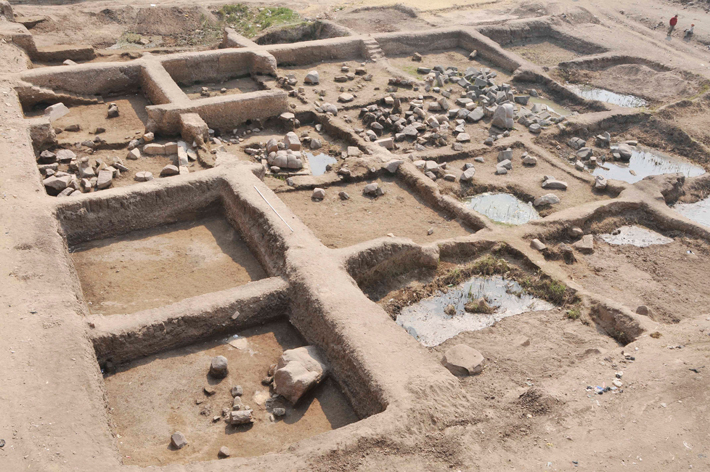 Heliopolis’ remains may soon be completely inaccessible, covered over by rapidly expanding housing projects and other construction in the booming Egyptian capital. Cairo is one of the most crowded cities in the world. With 50,000 people per square mile, it’s almost twice as densely populated as New York. Matariya, the neighborhood surrounding Heliopolis, packs more than twice that many people per square mile into brick and cinderblock tenements, many directly overlooking the open spots where Raue and his colleagues work. “It’s more under threat now. It’s like trying to stop Central Park or Hyde Park from getting built over,” Quirke says. “But Cairo is growing in a way New York and London are not. It’s remarkable there’s anything left of Heliopolis at all.”
Heliopolis’ remains may soon be completely inaccessible, covered over by rapidly expanding housing projects and other construction in the booming Egyptian capital. Cairo is one of the most crowded cities in the world. With 50,000 people per square mile, it’s almost twice as densely populated as New York. Matariya, the neighborhood surrounding Heliopolis, packs more than twice that many people per square mile into brick and cinderblock tenements, many directly overlooking the open spots where Raue and his colleagues work. “It’s more under threat now. It’s like trying to stop Central Park or Hyde Park from getting built over,” Quirke says. “But Cairo is growing in a way New York and London are not. It’s remarkable there’s anything left of Heliopolis at all.”